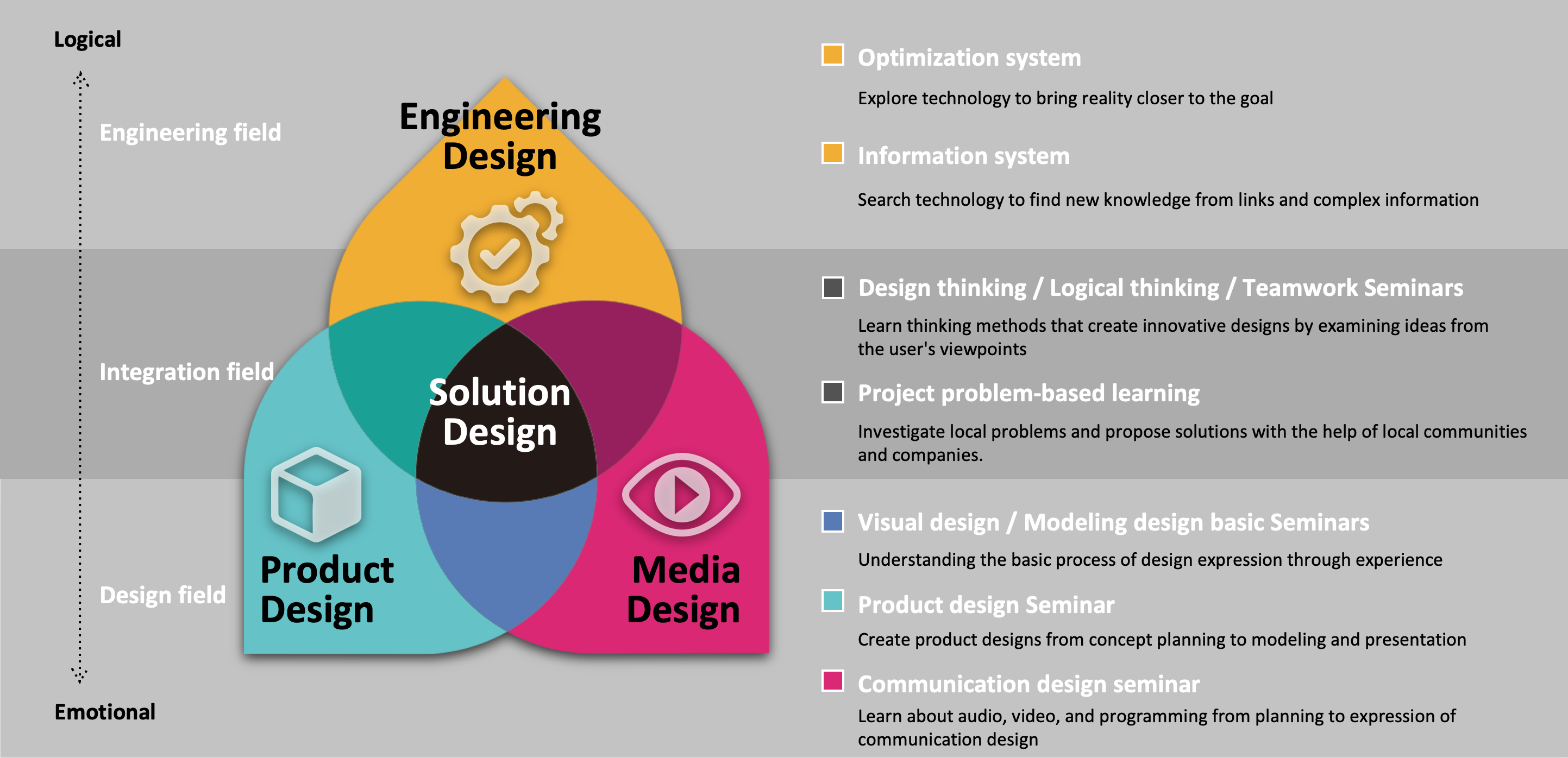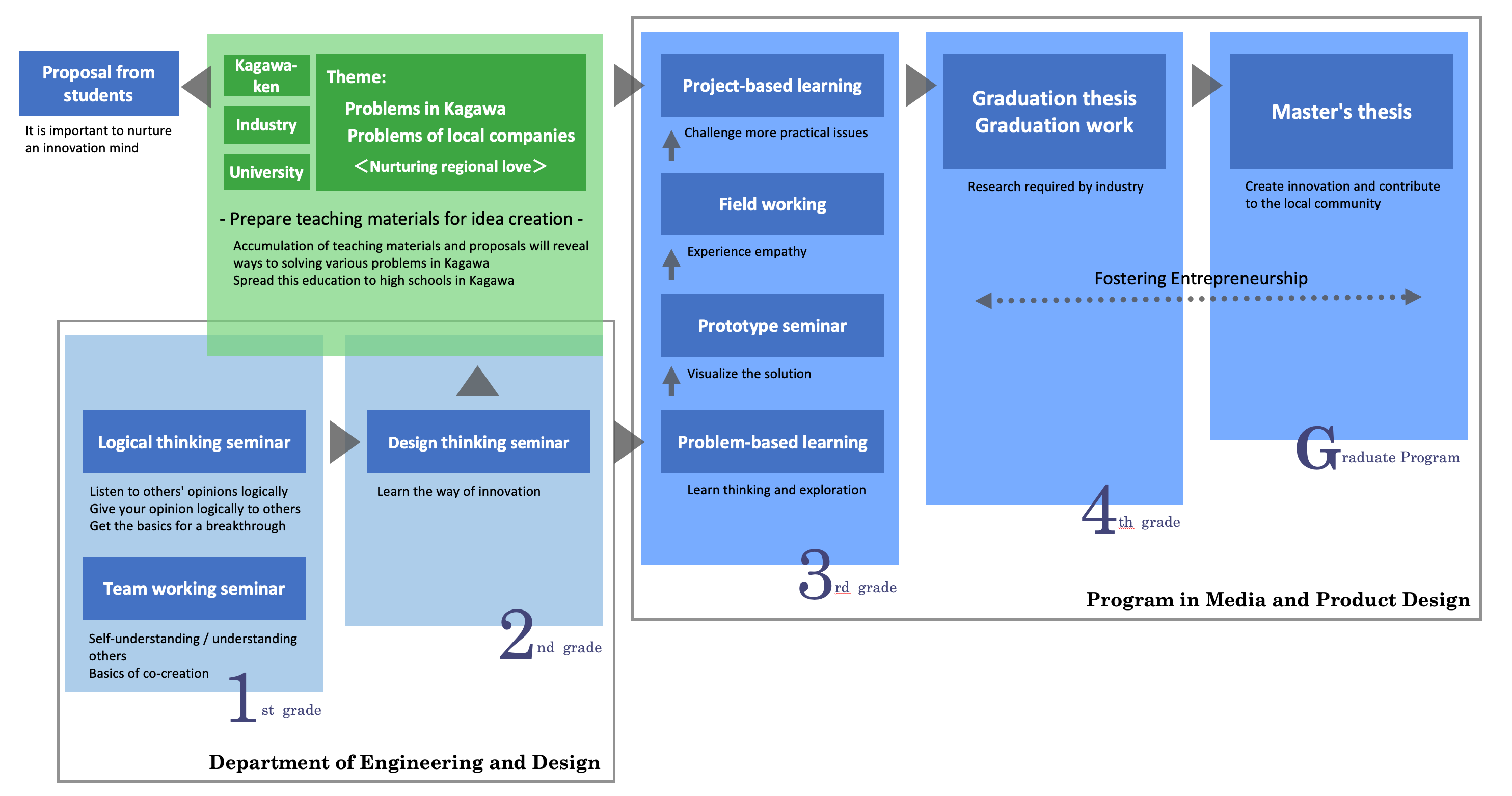Nurturing "The Next-Generation Engineering Personnel" with High Creativity
Kagawa University, Faculty of Engineering and Design, Department of Engineering and Design cultivates next-generation engineering personnel who accurately grasp changes in the times and create innovations that fit the needs of society and people. In particular, the media and product design course aim to foster human resources who can create things of meaningful value that are creative and have social significance through a curriculum that pursues the logic required for engineering and the sensibility necessary for design and art. Practical research at four research studios with design thinking as the basis of education.
・Engineering design studio (producing features and systems based on new ideas)
・Product design studio (presenting new ways of living through manufacturing)
・Media design studio (creation of new interactions and expressions)
・Solution design studio (resolving complex issues from broad perspectives)
 Field of research for the shape and media design courses Flow of course majors
Field of research for the shape and media design courses Flow of course majors
All students majoring in the course will consult with faculty members to discuss the choice of the classes for the second year and beyond. Also, the students choose subjects recommended by each studio to deepen their expertise. In the third year, design thinking skill is enhanced through problem-based learning approach by going out into the real world for fieldwork, improves skills in workshops to turn their designs into prototypes. Furthermore, as a compulsory subject, the students are required to engage in project-based training in collaboration with the local community. Then, they are assigned to one of the four studios based on their experiences and move into graduation research or production projects.
 Flow of course majors
Flow of course majors
5 Qualities for “The Next-Generation Engineering Personnel”
- Basic mathematical skill necessary for engineering regardless of specialized field.
- High ethical standards, interpersonal and intercultural communication skills.
- Understanding of the region and creating value in collaboration with the community.
- Using design thinking to integrate aesthetics, the understanding of diversity, planning, prototyping, etc.
- Risk management ability to grasp and extract various risks, take countermeasures in advance, and respond to unexpected situations.
2020.3.31

 Return to List
Return to List